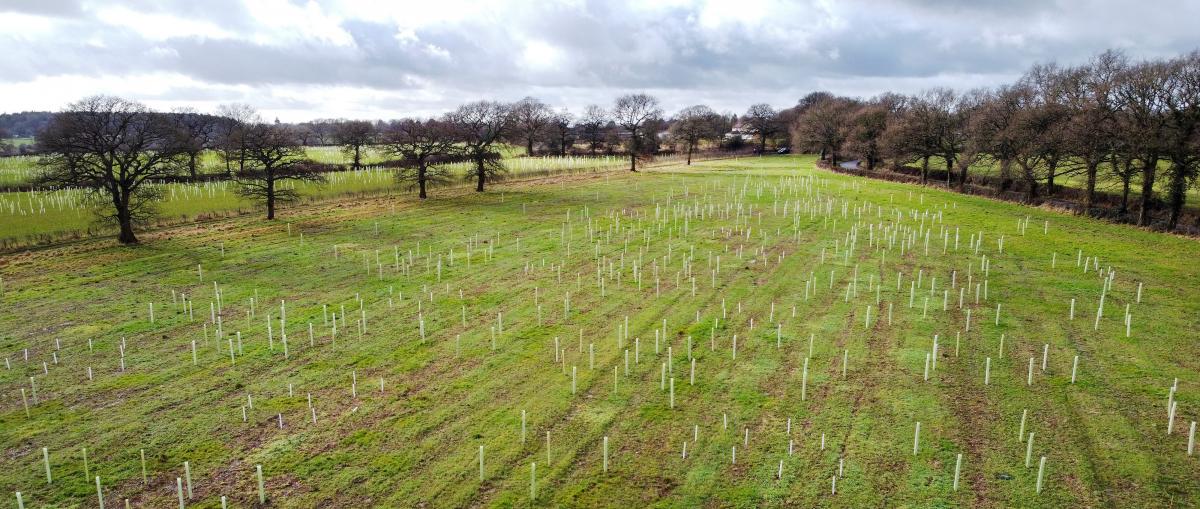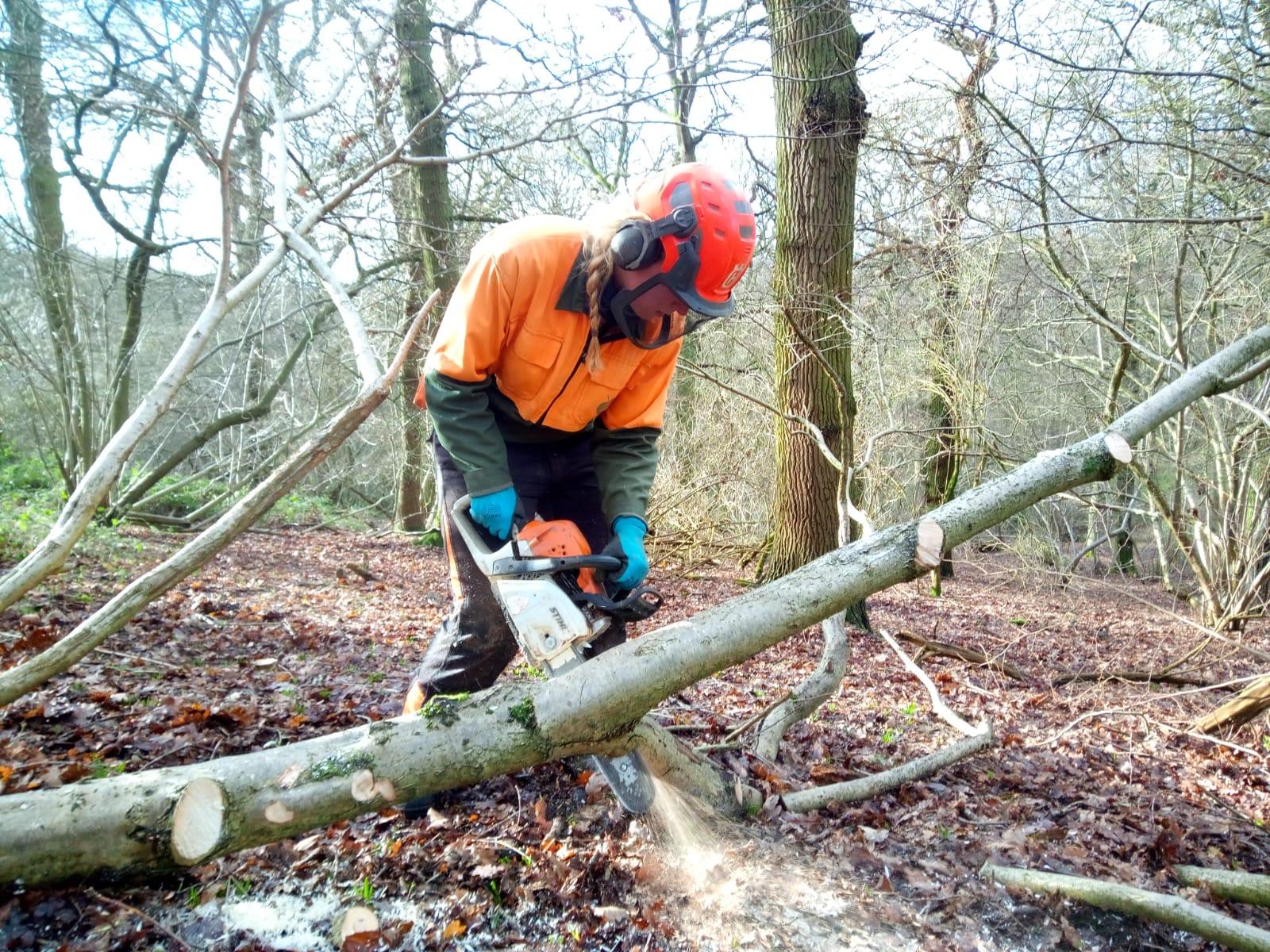
Tree planting during the COVID-19 pandemic
The winter season is always a busy time in the Forest, and this year we had to adapt our working due to the pandemic. Despite the challenges, thanks to our dedicated team we achieved our tree planting targets and the Forest continued to grow.
Tree planting amidst a pandemic
The operational challenges of tree planting during a pandemic were lessened slightly by the relatively low number we were due to plant this season. However, not having our volunteer tree planters, who always make a significant contribution to the woodland creation, was a great loss, and we missed them and their camaraderie.
Despite everything we had to contend with, we created new woodland at two sites: Oak Wood near Tanworth in Arden and Chapel Gate Wood near Ullenhall. We planted 32,855 and 13,380 trees at each site respectively, taking the total number of trees planted to 1,930,163 since the charity began. Excitingly, we will plant our 2 millionth tree next winter season.
Providing a socially distanced and COVID-secure workplace
Adapting our working practices meant that our forestry team was able to continue working safely despite the pandemic. Working in the open has a very low risk of COVID-19 transmission and we further reduced the likelihood by working in ‘bubbles’ of three rather than the usual groups of six.
We also hired two welfare units and four site toilets and allocated these to individual teams to reduce the risk of transfer between teams.
Forest Ranger James says:
“The entire team showed incredible adaptability to face the challenges of COVID-19 and social distancing measures whilst tree planting. Planting is a job that already requires high levels of organisation, so to finish the job effectively and safely during a pandemic was a huge credit to the team.”

Winter maintenance work in the Forest
We received permission from the Forestry Commission to plant the trees earlier than anticipated this year, which allowed for an October start. Starting earlier meant we were able to complete tree planting by early February, which then enabled us to move on to important Forest maintenance work which can only be carried out in the winter months.
We have undertaken first cut hazel coppicing in some of the 10 – 20 year old plantations to start the coppice cycle, and restoration coppicing in one of our Ancient Semi-Natural Woodlands with some coppice stools probably last cut over 50 years ago.
The restoration coppicing is important to give age diversity to the understory and will help with our dormouse reintroduction work.
Forest Ranger Ian says:
“The Dorsington ranger team including the forestry interns coppiced hazel in Dorothy’s Wood, Roman Fields Wood and Ralph’s Wood."
"The cut timber is being utilised in many ways from hurdle making, bean poles and firewood, and of course to help wildlife in the woods as we have left many habitat piles and dead hedges. We have already seen wrens and robins using these deadwood features, so they should provide nesting habitats for years to come."
"As the hazel stools regenerate, they will gradually fill in the gaps we have created in the woods, but for now the coppice areas are open airy parts of the woodland.”
Other winter maintenance work included loss replacement and tree shelter removal in our establishing plantations, fencing removal where it is now redundant and gate repairs in public access areas.
Growing the Forest
Acquiring land is central to our vision of creating a 30,000 acre Forest across the heart of the country which will be here for hundreds of years to come.
To continue to expand the Forest, the charity is assembling a three year land bank. Last year we secured new land at Bearley, Perry Mill and Cleeve Prior, adding 240 acres to the Forest. Read more about our land acquisition.



